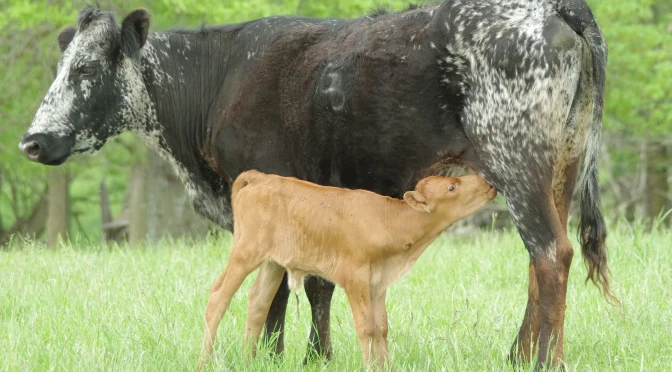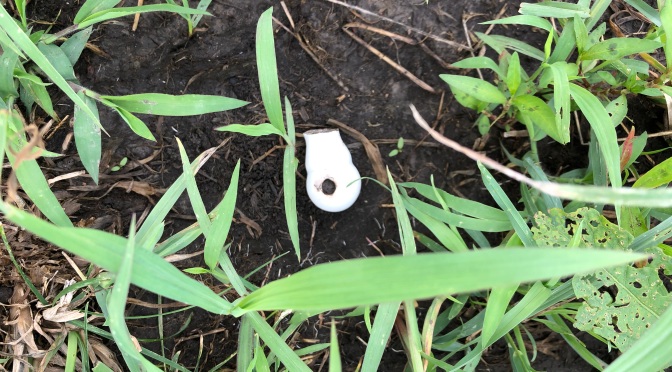Combining here the first two points of profitability and harmony since, honestly, they could switch places. Both cut down on labor significantly and typically increase calf survivability.
However, after this entire year plus a few months of almost constant mud and having unfortunately purchased several unadapted cows, I’ve come to realize that if one is to combine herds into one mob, you must allow a great deal extra winter grazing forage to allow for substantial trampling waste to keep them out of the mud. It is true that there is some value to trampling, but feeding the microbes is more efficient by cycling it through the stock. It seems i can never learn all the lessons i need to in the course of one lifetime.
For reasons I’ve discussed before, my cows have been calving in mid-April – knowing that that can be a challenging time of the year. A real problem with calving out of sync is the problems continue through the year with breeding out of sync and weaning out of sync. This year (2023) my cows should start about May 1. Next year, i may move to May 15.
Your time is just as important as anyone else’s – be sure you are paying yourself and others a fair wage with benefits or your operation is a hobby and not sustainable nor regenerative.
Another issue is a problem with calving in a managed/movement grazing scheme is leaving calves behind. This happens all too much. Although it takes some planning, it may be best to not disturb the cows whilst calving and give them plenty of space. Sure, this will result in some loss of grazing efficiency, but having relaxed cows and heifers with better opportunity to bond will likely outweigh the loss of grazing best practice.
Cleanliness is paramount in a calving paddock as is being well drained with no ditches or draws. It may very well be that those need to be fenced out to avoid calves dropped into ditches and cows and/or calves smashed and killed in the mud. This has been a very expensive journey for me in that regard, even in the summer as cows are seeking cool.
Life is a balance. Harmony – Decide your goals, temper them a bit with time and grace to make mistakes. Learn from others’ mistakes since you do not have time to stumble over the same rocks. Do not forget your family and their interests and don’t underestimate how quickly the years will pass and your strength and stamina will begin to wane. Position your operation to handle the unexpected changes life will throw your way. Sharpen that pencil.
Dr Dick Diven (Low Cost Cow/Calf) suggested that in toxic endophyte country like ours in north central Missouri, fall calving may be a way to avoid the highest toxins during breeding season. However, that is completely out of sync with nature and results in huge wintering costs trying to maintain a nursing cow on winter stockpile or hay. The best time for cows to calve here is May-June – the same time during which bison have been naturally selected. Manage the toxins in your pasture and select animals which tend to thrive despite ingesting them.
Create something beautiful today!
Finally, my brethren, whatever is
true, whatever is honest, whatever is
just, whatever pure, whatever lovely,
whatever of good report, if there is any
virtue, and if there is any praise, think
on these things. Philippians 4:8 HRB











